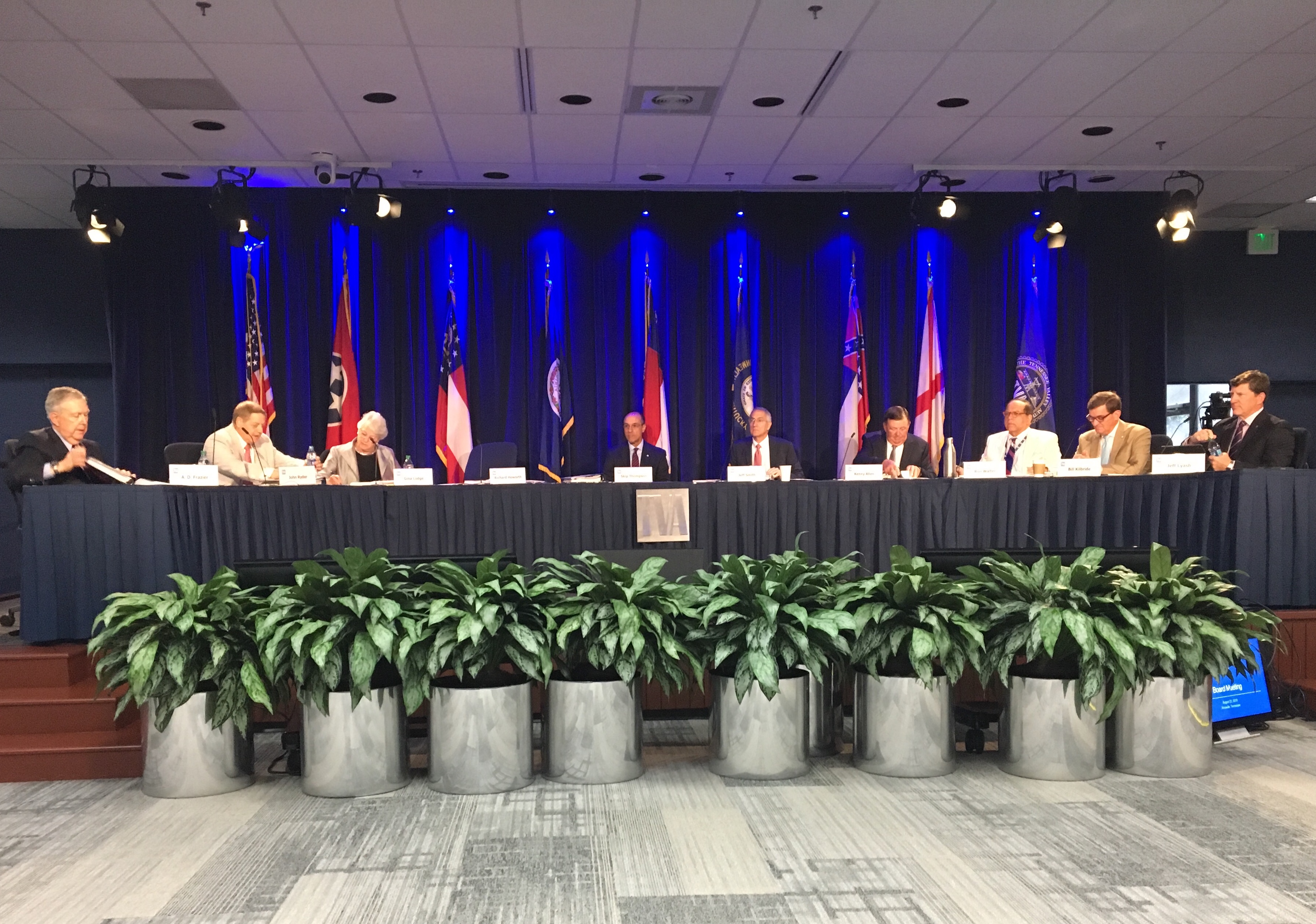KNOXVILLE - With electricity consumption stable or declining in the future, the Tennessee Valley Authority is on a new mission.
The government utility, which harnessed the power of the Tennessee River with a network of dams and built America's third biggest fleet of nuclear reactors after building 59 coal-fired units, isn't planning to build any major new baseload generation in the next two decades. Instead, the 20-year power plan adopted by the TVA board Thursday envisions getting more power out of existing nuclear, gas and hydro units and turning more to the sun, backed up by more energy storage and other new technologies, to meet the changing energy demands of the Tennessee Valley.
"The plan continues to leverage more out of our nuclear and hydro fleet; it adds to our natural gas generation that we have built, and it draws in new distributed technology in a much bigger way - solar being the primary one," TVA President Jeff Lyash said.
For the first time in its 86-year history, TVA doesn't have any plans to build any major new power plants to boost power sales. But Lyash said new technologies will continue to reshape the energy market.
To replace aging coal plants including the Paradise and Bull Run Fossil Plants scheduled to shutdown by 2023, TVA will continue to study the possibility of building small modular reactors in Oak Ridge in the future and could eventually bring up to 14 gigawatts of solar generation and 5 gigawatts of battery storage. But TVA has no immediate plans to build any new plants and it no longer has any federally funded projects like its earlier work on fertilizer development and new energy technologies.
But even though it won't be building major new dams, coal plants or nuclear reactors, Lyash said TVA's mission remains vital and unchanged, citing former President John Kennedy's 1963 speech declaring that TVA's work would never been done.
"Our mission is service and that mission is just as clear and compelling today as it has ever been," Lyash told the TVA board. "There is no reason to revisit that mission because it is just as relevant today as it was 86 years ago."
TVA Chief Financial Officer John Thomas said improved energy efficiency of machines, buildings and appliances is cutting energy consumption while new solar, wind, battery and other distributed energy sources are allowing businesses and homeowners to produce more of their own power. That means TVA sales are expected to remain relatively stable over the next decade, although officials stressed that the new integrated resource plan is designed to be flexible if market conditions change significantly from anything from electric vehicles to potential new carbon controls.
The new integrated resource plan updates previous long-range power plans TVA completed in 2011 and 2015 and will continue to make TVA a cleaner and more efficient utility, Lyash said.
TVA has already cut its sulfur dioxide emissions by 99% from its 1977 peak, reduced its nitrogen oxide emissions by 96% from their 1995 peak and trimmed carbon dioxide emissions by 51% from the 2005 levels. The closing of the Paradise and Bull Run plants - and potentially other plants like Kingston in the future - should allow TVA to reduce its carbon emissions by 70% by 2030, according to TVA.
Coal-fired power plants, which supplied 58% of TVA's power in 2007, will generate about 20% of TVA's power this year and that share is expected to decline in the future. Most of the power loss from coal has been made up by more nuclear and natural gas-fired generation over the past two decades, Lyash said.
But environmental groups said Thursday they are disappointed that TVA didn't make a bigger commitment to move away from burning fossil fuels over the next two decades.
"We're glad TVA is planning for the smart business decision to burn less coal and add more affordable, clean solar to its electricity generation," said Bonnie Swinford, an organizer for the Sierra Club' Beyond Coal Campaign. "But even with the positive strides, TVA should make much bigger investments in energy efficiency to help customers use less electricity and pay lower bills. And they shouldn't just trade burning coal for burning gas, which locks in dangerous greenhouse gas emissions for decades and feeds the climate crisis."
Amanda Garcia, managing attorney for the Southern Environmental Law Center's (SELC) Tennessee office, said TVA's new power plan fails to do enough to encourage solar power generation on rooftops and maintains TVA's dominance of the electric market in its 7-state region.
"Even though TVA's own study highlights the potential for distributed energy resources like energy efficiency and rooftop solar to play a larger role, it appears it's still business as usual for TVA," Garcia said. "This so-called road map for the Valley's energy future focuses on expanding investments in fossil fuels and gaining a monopoly over solar production. TVA is missing a huge opportunity to chart a different course."
Laura Campbell, TVA's vice president of supply chain who helped work on the latest integrated resource plan for the past 18 months, said the long-range plan was compiled with the help of hundreds of community leaders, energy groups and TVA consumers from across the Valley. The power plan is designed to achieve six goals - low cost, risk informed, environmentally responsible, reliable, diverse and flexible, Campbell said.
"It is the collective wisdom that produces the best product," she said.
The plan was endorsed by the 18-member Regional Energy Resource Council which studied the plan at a series of meetings over the past year.
"This was a comprehensive and thorough process that provided multiple layers of transparency," said Dr. Wayne Davis, the retired interim chancellor at the University of Tennessee in Knoxville who chaired the council.
Contact Dave Flessner at dflessner@timesfreepress.com or at 757-6340.


